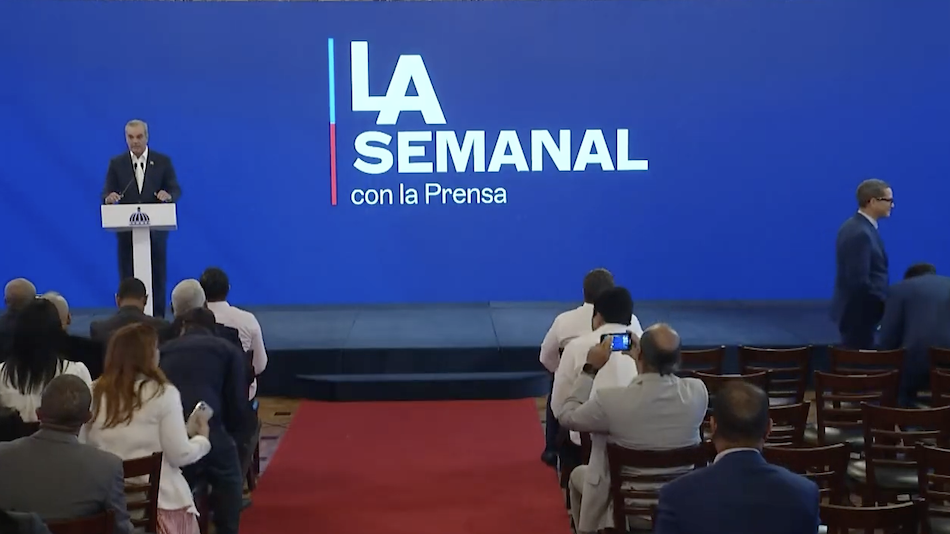
President Luis Abinader used the first half of the weekly La Semanal press conference on Monday, 3 March 2025 to tell Dominicans and the world of the progress that is happening and the goals for his second term. During his presentation in La Semanal con la Prensa, Abinader said the government is focusing on the areas of health, safety, housing, the economy, employment, education, and institutional development.
He said he is working to turn the Dominican government into “the most modern and digitalized in Latin America.”
He highlighted that the DR is in 6th place in sustainable development behind Chile, Uruguay, Cuba, Argentina and Costa Rica. He expects to leave the Presidency with the country in third place by 2028.
He said his economic team has compiled information that shows that if the present trend continues the nation’s economy (GDP) should double by 2036.
He stressed more Dominicans are moving into middle class. 37.7% of the Dominican population was categorized as middle class in 2020, when Abinader took office. He says this figure has increased to 45.9% in 2024 and he expects it to climb to 50% by 2028.
He spoke that one of the main targets is to increase the country’s GDP per capita from its current US$11,300 to US$15,000 by 2028.
Regarding foreign investment (FDI), the President projected an annual average of US$5 billion by 2028, up from US$2.5 billion in 2020 and $4.5 billion in 2024. Abinader also mentioned plans to boost exports, which totaled US$13.9 billion in 2024, with a target of US$17 billion by 2028.
Tourism plays a key role in the projected growth. In 2024, the country welcomed 11.2 million tourists, and the government’s goal is to increase that number to 14 million by 2028.
On employment formalization, which currently stands at 45.2%, Abinader aims to raise that figure to 50% by 2028. He also discussed efforts to address the issue of “nini” youth—those neither studying nor working—stating that his administration seeks to reduce this rate to 13%. Additionally, the government plans to increase the number of formal micro, small, and medium enterprises (MSMEs) to 350,000, up from the current 256,000.
The President also emphasized increasing female participation in the workforce, which currently stands at 49.5%, with the goal of reaching 52% by 2028.
To achieve these targets, Abinader mentioned a range of ongoing and upcoming programs, including RD Trabajo, Oportunidad 14-24, Becas para el Desarrollo, Formación Dual, the Cuidado Policy (a new initiative to support families), and the Inglés como Segunda Lengua program. These initiatives are part of his administration’s broader agenda to improve the well-being of the population.
Addressing rural poverty is another central part of the plan. The President said that living in a rural community not be equated to poverty is a government goal. The government aims to continue improving rural living standards, with key projects such as rural electrification and replacing dirt floors with cement floors. Furthermore, they are working to raise income levels for rural workers, with an expected increase in hourly labor income from US$85.70 in 2021 to US$140.03 by 2028.
Public health improvements are another crucial component of the plan. The government aims to extend life expectancy from 75 to 77 years by 2028.
Additionally, traffic accident fatalities are a priority concern, with efforts underway to reduce this public health issue as part of the broader strategy to ensure a healthier population. He also spoke of the goal to reduce traffic accident deaths now at 31 per 100,000 to 20 per 100,000 by 2028.
Follow the story in Spanish:
Presidency La Semanal 3 March 2025
N Digital
Diario Libre
5 March 2025

